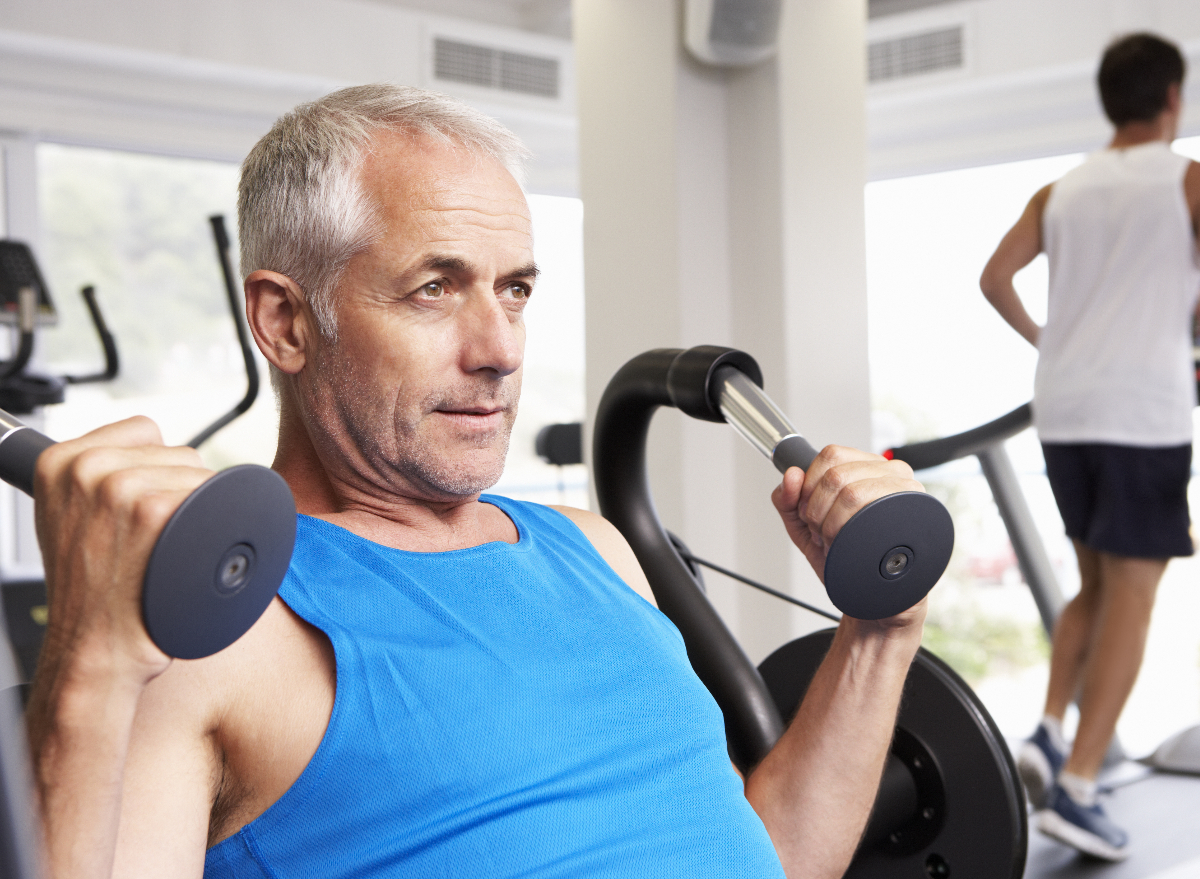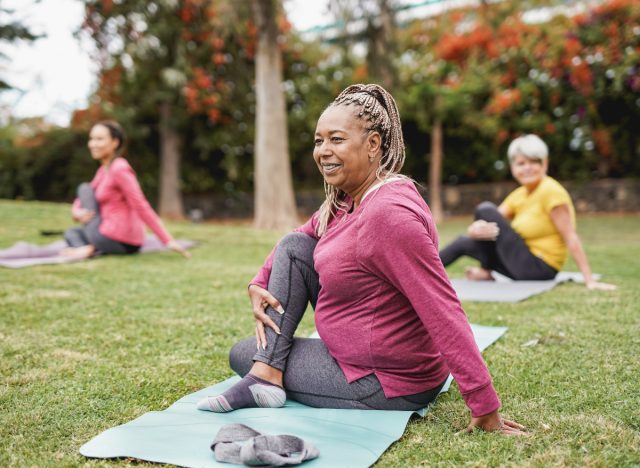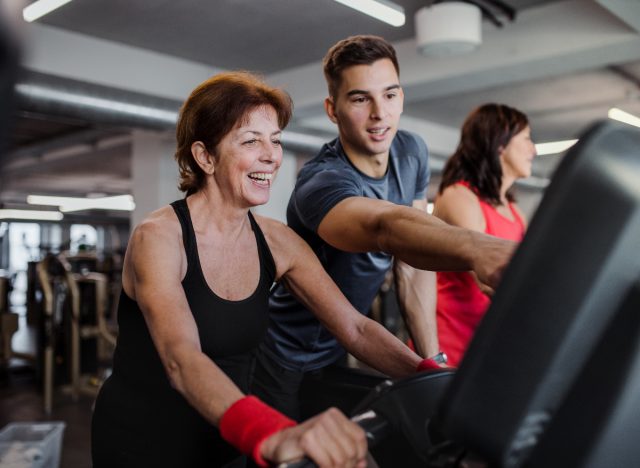5 Bad Exercise Habits That Increase Your Risk of Injury After 50

We will all experience many various changes unique to each of us by the time we reach the age of 50. For instance, some of us may have grey hair; others will develop a mid-life pot belly. Hopefully, the majority of us will master how to enjoy the simple things in life by that birthday. One thing’s for sure: None of us will get younger, which is why it’s essential to take care of your mind and body. Self-care—especially when it comes to working out on a regular basis—is a must. We’re here to share five bad exercise habits that increase your risk of injury after 50, so before you hit the gym, listen and learn.
If you already practice a solid exercise routine, you’re off to a great start. According to the Centers for Disease Control and Prevention (CDC), it’s essential for older individuals to stay active on a consistent basis. Doing so can help you avoid many chronic health issues that occur as you age. It will also keep your body strong so you can maintain an independent lifestyle in later years.
Now that we’ve covered the importance of exercise, let’s move on to learn the bad habits you may have that can cause injury. We spoke with Michelle Parolini, NASM-CPT and senior master coach for Row House to learn what they may be. Consider making these necessary changes before your next visit to the gym so every workout is productive—and safe.
Not doing mobility work.

Mobility training will help ensure your muscles stay strong. Muscles that are tight and inactive can significantly decrease your ability to perform common daily activities that keep you independent and healthy. Parolini warns that not doing mobility work can make simple tasks like lifting groceries or getting in and out of your bed challenging or even impossible to do as you age.
Not lifting heavy enough or not strength training altogether.
You lose anywhere from 3% to 8% of your muscle mass every 10 years after the age of 30, according to research published in the Current Opinion in Clinical Nutrition and Metabolic Care. If that’s not enough of a buzzkill, the rate increases after 60 years of age.
“This involuntary loss of muscle mass, strength, and function increases the risk of osteoporosis, arthritis, and other chronic conditions,” Parolini explains. Hence, she says that not lifting heavy enough or not strength training altogether is bad and that it’s important to maximize your level of strength training as you progress in your workouts.
Not seeking out the advice of a fitness professional.

“Getting off the couch and into the gym is something EVERYONE should do,” Parolini says. Once you reach 50, you can consider working with a personal trainer who specializes in strength and cardio plans for your age group. Your trainer will help you reach your specific goals by mapping out a personalized path for growth. Whether you’d like to be able to show off your moves on the tennis court through your 60s or hike with your kids, a trainer will help you accomplish your game plan.
Not allowing enough time for recovery.
Plain and simple, recovery is a necessity when it comes to muscle recovery and growth. According to UCHealth, carving out time to recover and rest is essential to rebuild, repair, and get stronger in between exercising. Not allowing enough time for recovery is never a good idea.
Comparing yourself to others.
The last of the bad exercise habits that increase your risk of injury is comparing yourself to others and your younger self. “This is the BIGGEST and most detrimental habit many individuals have,” Parolini warns.
As people age, it’s a common tendency to look back at what they “used to” be able to do. Everyone’s body changes and grows. It’s crucial to focus on where you’re at in the present rather than dwell on the past. Being mindful of what your body really needs in this chapter of life is the right road to building strength.









